Before I baked 230 cupcakes in a weekend, I’d only ever made four dozen in one sitting. This order required a lot of planning, but I pulled it off. I learned a lot that week, and I compiled all the tricks I learned into this blog post! These large batch baking tips will help home bakers stay organized with their first large orders.
Use Tried and True Recipes
Never use a recipe you haven’t tried—even mine! Each recipe needs to be tested at least once in your home kitchen to ensure it works. We may not live in the same climate, use the same flour, measure ingredients the exact same way, or even have the same color of baking pans. Each of those variables (and more) can have significant effects on your bake.
There’s always the chance that something won’t turn out right when baking. That chance is typically increased when you use a new recipe. Then, it may take time and effort to troubleshoot what went wrong. That will cut into the rest of your available time and add unnecessary stress.
I was notified about my event a little more than a month in advance, which gave me plenty of time to recipe test. For the first three weeks, I only tested recipes for the upcoming event. In that time period, I managed to develop four new cupcake recipes and three new frosting recipes that all consistently worked.
To cut down on a little bit of work, I used one older fan-favorite recipe (my cherry almond cupcakes) and used the buttercream from my birthday cake macarons for another.
What if my client wants me to make something specific, and I don’t have enough time to recipe test it?
Well, that puts you in a tough spot. Clients should give you plenty of notice so that you can adequately prepare for these sorts of things (especially large orders), but I get that that doesn’t always happen.
If you’ve never made a macaron and your client orders 120 of them for this coming weekend, you need to have an honest discussion with them about the probability of your success. Then, they should be prepared to look elsewhere for someone more experienced or pay a premium to accommodate you testing numerous batches throughout the week at the cost of other opportunities you may have had.
If you’ve made something similar in the past (say, a two-layer vanilla cake when the client wants a three-layer apple cinnamon cake), you’ll probably be okay just slightly adjusting your recipe. You can also use a highly-rated recipe from a cookbook or blogger, but please choose wisely. It may not take them the same amount of time to make the cake as it would you, and that can affect your schedule.

Make a Schedule
Once I had my recipes tested, I knew exactly how long each cupcake, filling, and frosting would take me to make. Then, I blocked off the time I would need for each.
I wanted to make my own orange marmalade and candied orange slices, and those take more than a day to set. I set aside Thursday for both of those. Then, I wanted the cakes to be as fresh as possible, so I blocked off all of Friday for those. And just in case I wasn’t able to get something done on Saturday, I had flex time on Sunday until 3:30 p.m.
I knew Friday and Saturday were going to be busy, but it would be possible. You can see an example of my schedule in the table below.
| Thursday | Friday | Saturday | Sunday |
|---|---|---|---|
| Orange marmalade | Gluten-free chocolate cake | Dairy-free chocolate orange French buttercream | Final touches |
| Candied oranges | Chocolate cake | Chocolate orange French buttercream | Final photos/videos |
| Cherry almond cake | Cherry and vanilla buttercreams | ||
| Funfetti cake | Birthday cake French buttercream | ||
| Cookies and cream cake | Cookies and cream buttercream | ||
| Whipped cream (with and without sprinkles) | |||
| Filling and frosting all 230 cupcakes |
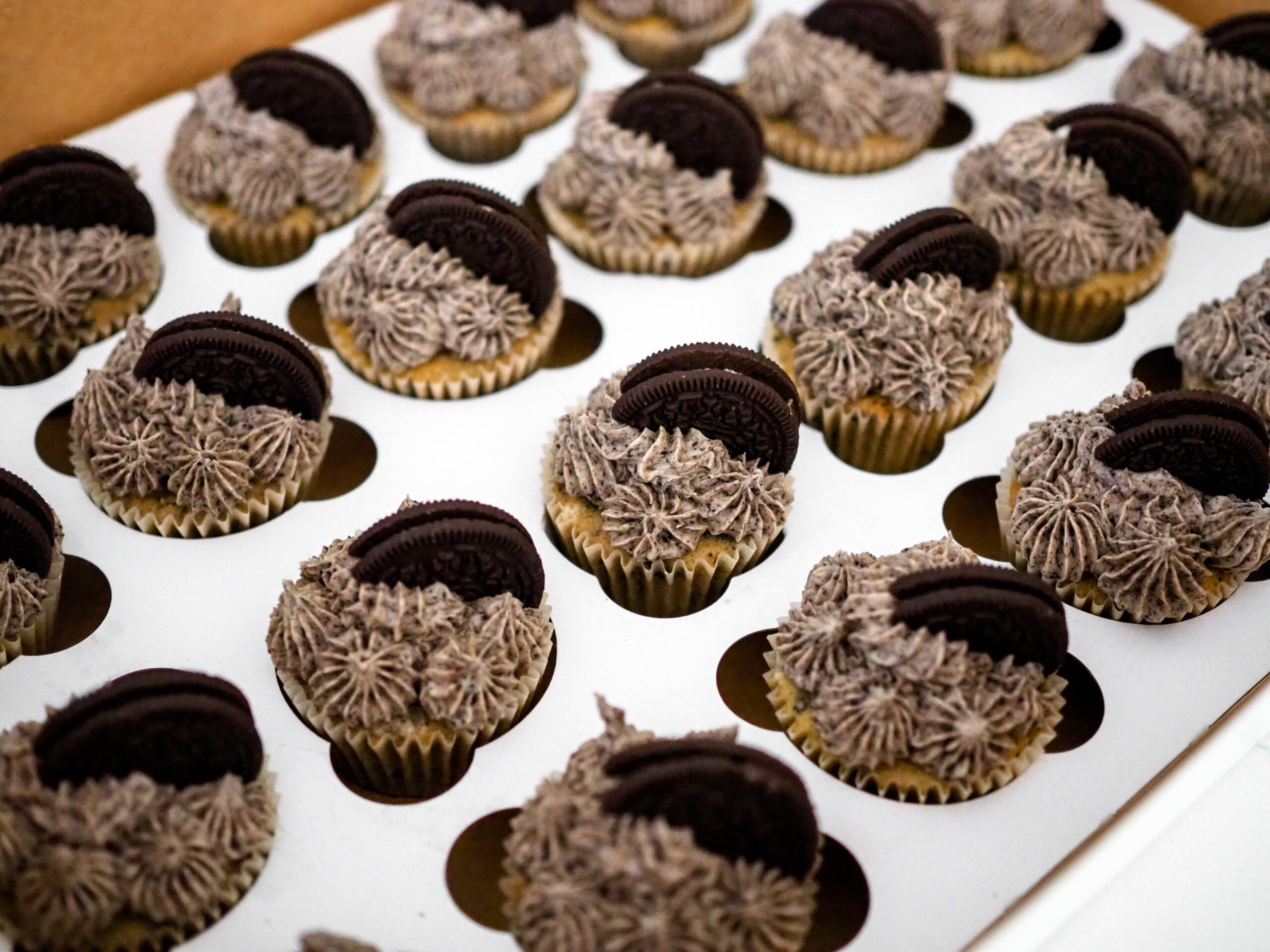
Stick to the Schedule, or Work Ahead (If Time Allows)
I intentionally made Thursday a light day in case I wasn’t able to take the whole day off. Fortunately, I finished with plenty of time to spare, so I worked ahead a bit. That paid off, because I had to bake another batch of gluten-free chocolate cakes on Saturday morning after a little mishap.
My schedule ended up looking like this:
| Thursday | Friday | Saturday | Sunday |
|---|---|---|---|
| Orange marmalade | Gluten-free chocolate cake | More gluten-free chocolate cake | Topping with candied oranges |
| Candied oranges | Chocolate cake | Dairy-free chocolate orange buttercream | Final photos/videos |
| Chocolate orange French buttercream | Cherry almond cake | Cherry and vanilla buttercreams | |
| Funfetti cake | Birthday cake French buttercream | ||
| Cookies and cream cake | Cookies and cream buttercream | ||
| Whipped cream (with and without sprinkles) | |||
| Filling and frosting all 230 cupcakes |
As you can see, I was pretty close! I stuck almost entirely to the schedule. There was a period of about an hour where I felt overwhelmed due to a repeatedly clogging piping tip on Saturday night, but everything else went swimmingly!
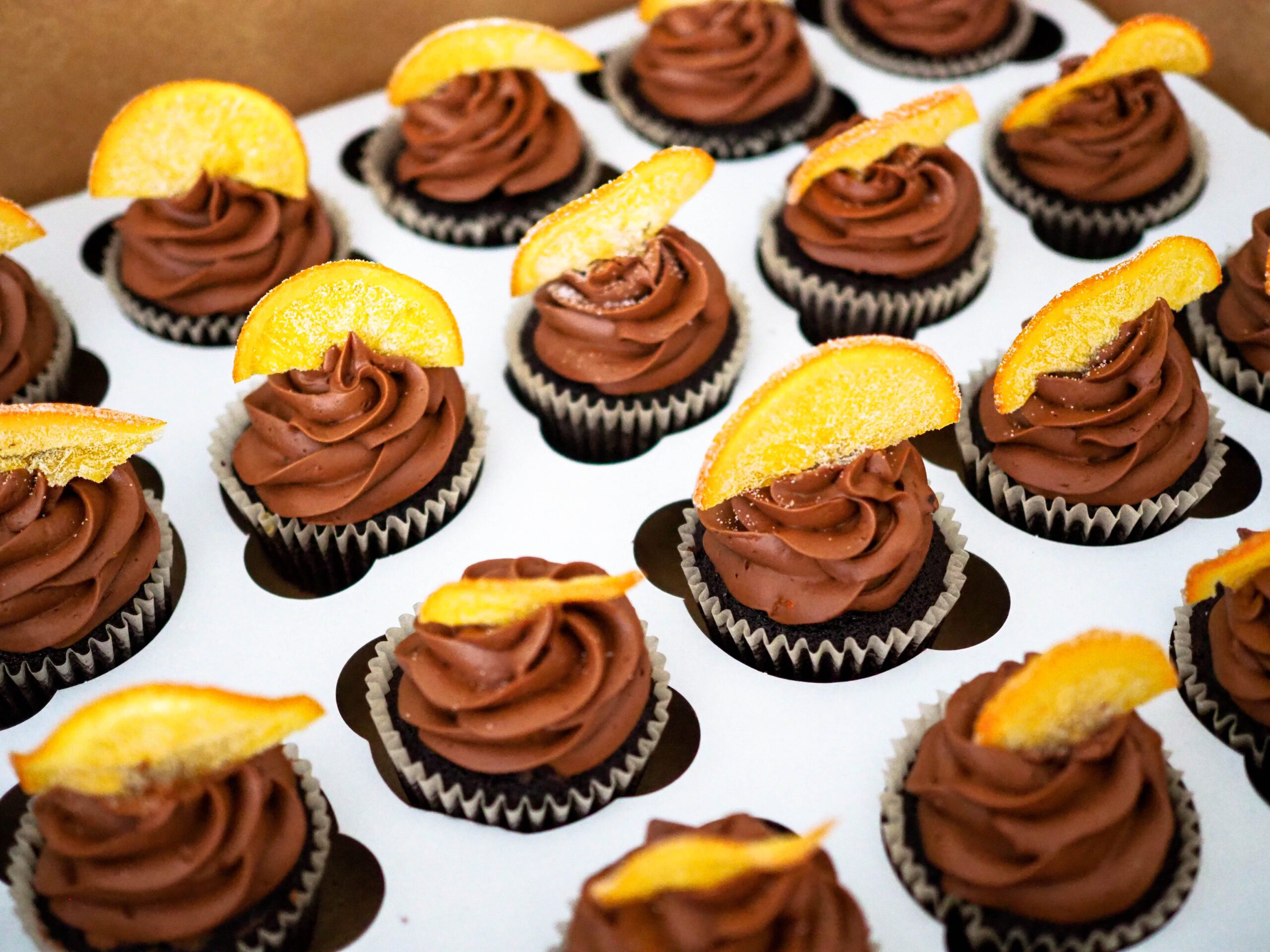
Build in Buffer Time
Intentionally setting aside extra time was something that really helped me keep a level head throughout all the large batch baking. Like I said before, I knew how long each recipe took, and I was sticking to my schedule. I knew that if something were to go horribly wrong on Friday or Saturday, I could use part of Sunday to fix it. That kept me calm and collected for the majority of the time, and I was never concerned about finishing on time.
Clean as You Go
If you’re using standard home-sized appliances, and it’s your first large batch, it’s pretty much impossible not to clean as you go. I’m usually pretty good about washing up in between steps when I make a recipe for fun; it’s only when I’m photographing a new recipe that I have to leave everything for the end. Otherwise, how else would I include my cleanup rating and photos of the dirty dishes with every recipe here?
I lost count of how many times I washed my Kitchen Aid mixer bowl. (It had to have been in the high teens, if not 20’s.) I only had the one stand mixer bowl, so there was no way I could let piles of bowls stack up on the counter, even if I had wanted to. And in most cases, I needed to use larger bowls to mix everything together at the end, anyway.
That’s not to say I didn’t have a massive pile of dishes at the week’s end, but it wasn’t the disaster I was expecting. (Maybe it was still the disaster my husband was expecting, but he has lower expectations when it comes to cleanup.) Then, as I slowly came back to life on Monday and Tuesday, I did dishes in phases so I didn’t get overwhelmed.
Since then, I have purchased a few extra KitchenAid mixer bowls (both metal and glass) and an extra beater (affiliate links). All of them have been really useful to make me feel like I have another stand mixer for just a fraction of the cost! In fact, the only time I’ve wished I actually had a second mixer was when I sent my KitchenAid mixer in for repairs—but that’s another story.
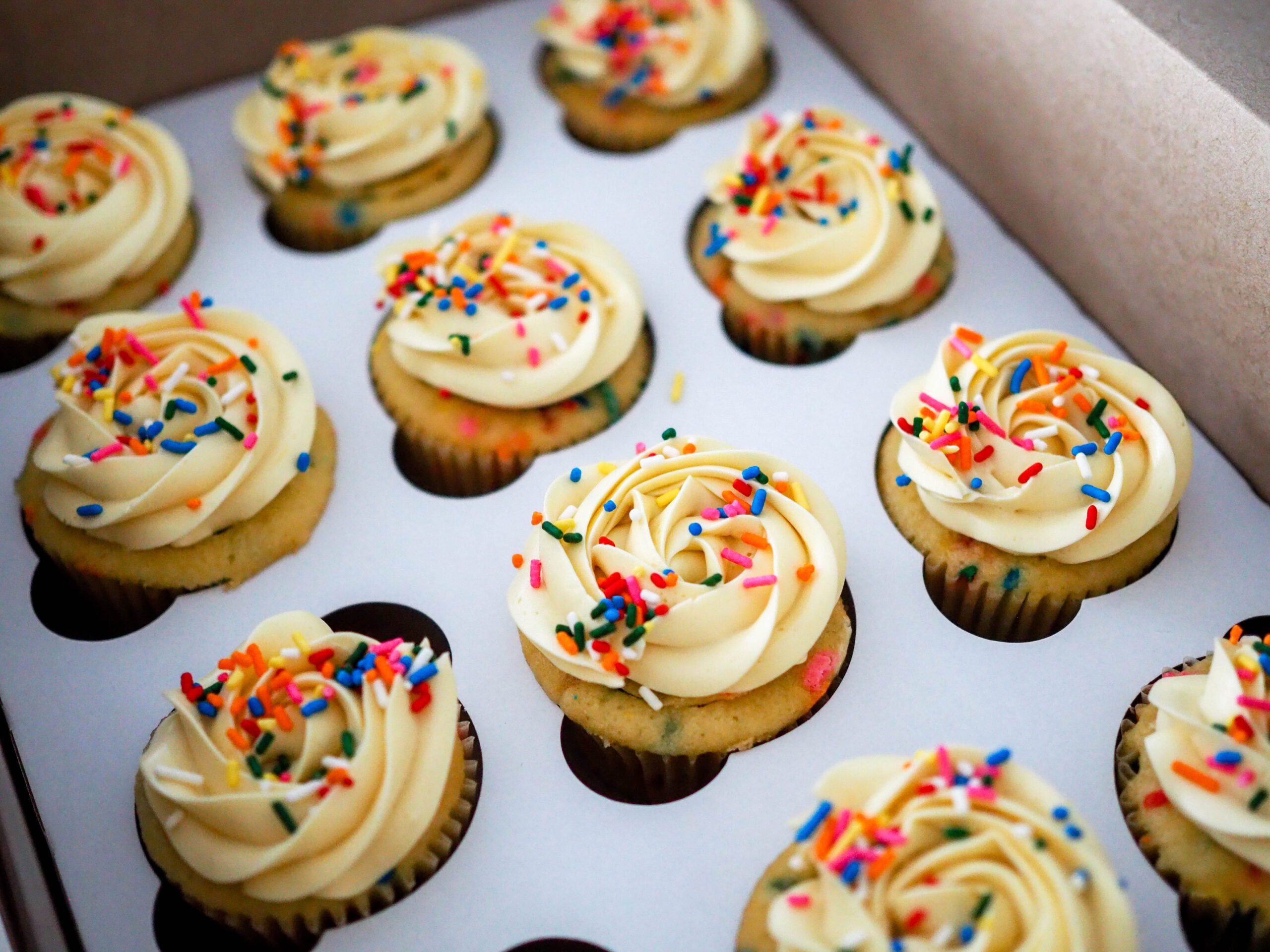
Worry about Content Later
I started out on Thursday thinking that I would be able to document everything for a great summary video by the end. While I managed to put together a fun summary video (find it on Instagram, Facebook, or TikTok), I did not film everything I wanted to.
I’m still new to filming everything I do in the kitchen, since I’ve never been big on sharing on social media. I have a vision and want to make my videos pretty, so filming takes time.
By Saturday, I was over it and filmed very few snippets of the day. That turned out to be just fine!
If it’s between filming a video that could potentially get you a lot of views or certainly finishing a commissioned order on time, always go for the commissioned order. An exceptional job on an order will likely mean you have a customer for life, and there will always be opportunity for content later.
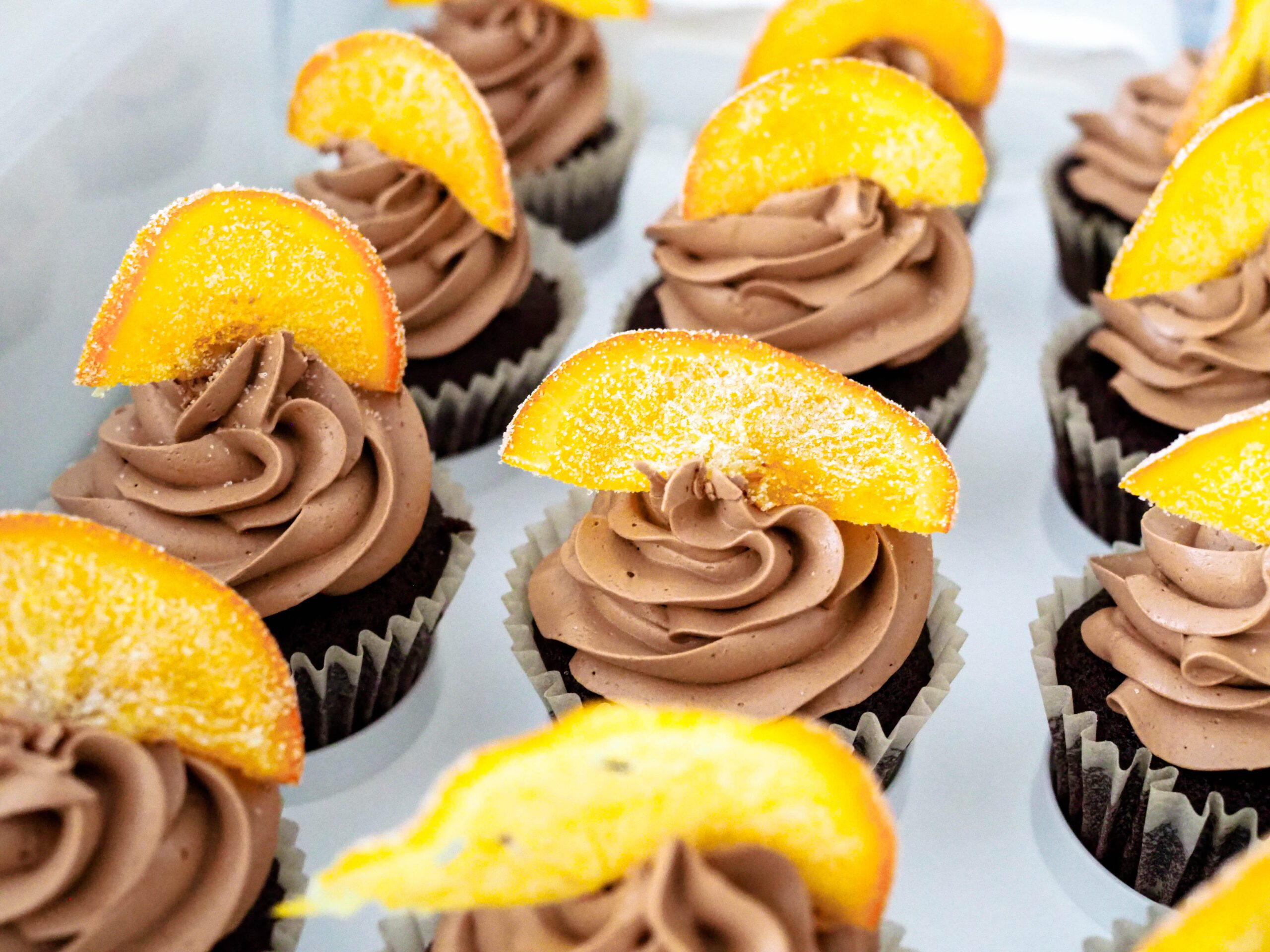
You Don’t Have to Do Another
My last tip is to remind yourself that you don’t have to accept another large order. If your heart isn’t in large orders, don’t do them, no matter how much they pay!
I took this order as a lower-stress test run to see if I could provide baked goods for large events. Turns out I can, and I enjoyed it enough that I wouldn’t mind doing it again.
That doesn’t mean that I would want to do a large order like this each month. I’m saving them for special occasions where it would help my friends or my business, not to the point where I’ll get burnt out. Since then, I’ve done a few more large events, but nothing quite on this scale.
I hope these large batch baking tips have been helpful for you in your hobby or business. I’d love to know if they helped you feel more confident about an upcoming order.
If you have any questions or are looking for encouragement, I’d love to cheer you on: Send me a message on social media or an email to get connected with me!

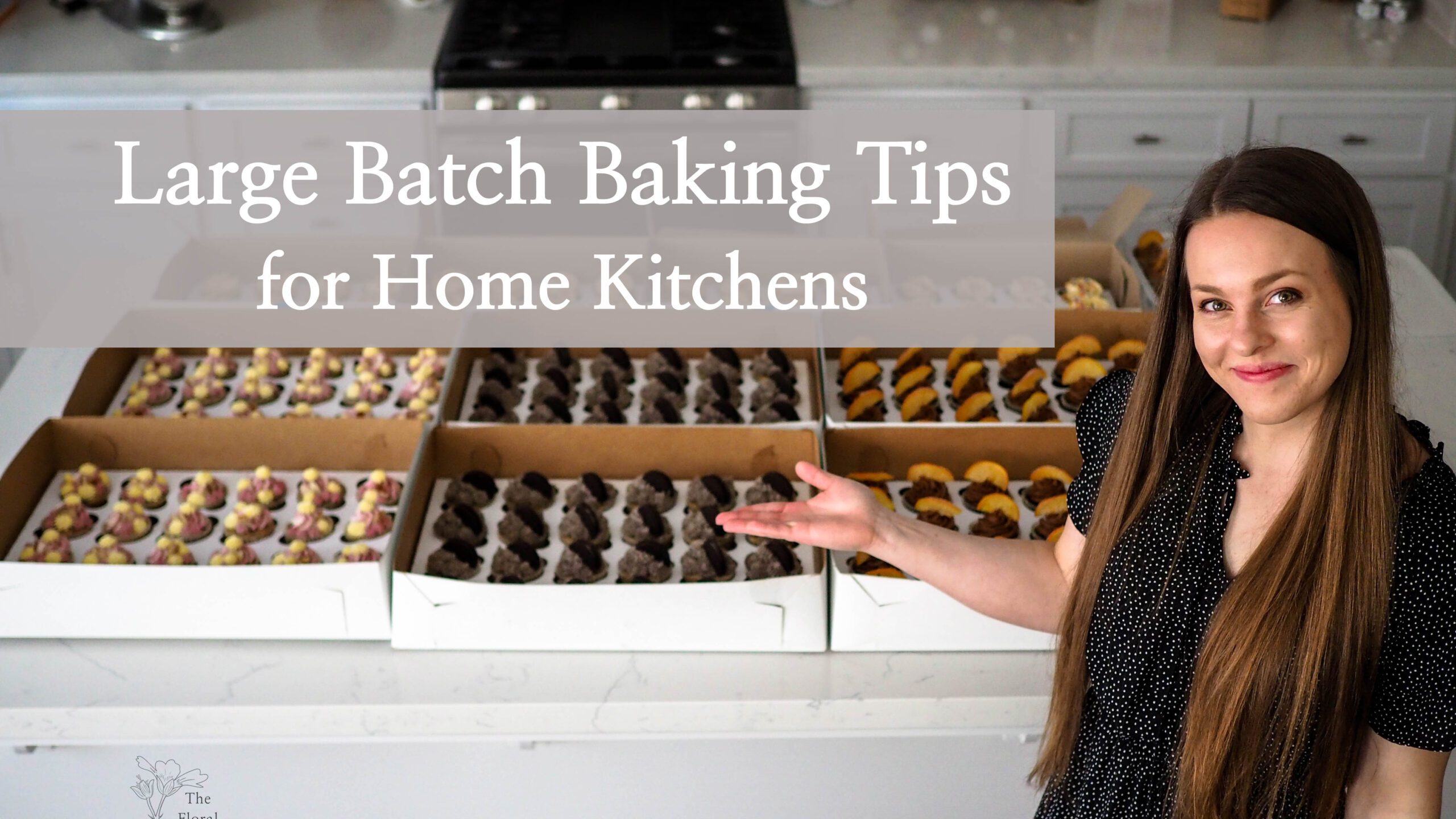
Good morning. I trust you all well. Beautiful and everything looks delicious . Myself and my daughter also do baking. She does all the big cakes and I do all the cupcakes and mini milktarts etc. Planning is important indeed. Our customers is so used to ordering vanilla, chocolate and red velvet cupcakes. Your cupcakes looks devine . I would love to introduce our customers to something different so I started doing Graduation, birthday, confirmation and birthday packages. With these packages I implemented other cupcakes in our package. Would love it if you would like to share some with me. Have a beautiful safe and blessed day further
Thanks for these tips! I have my first “big” order (80 graduation cupcakes), and I was glad to read this post. I can’t do it all in a couple of days because I have 3 kids under 6 at home, so I do most of the work after they’re in bed. I have gotten used to spreading it out over about a week or so (the freezer is my friend). But I need to get on top of writing out a schedule. I usually do when I’m busier with cakes; I just haven’t this time for some reason. So thanks again!
I’m glad these tips were helpful for you, Toni! Thanks for leaving a comment 🙂